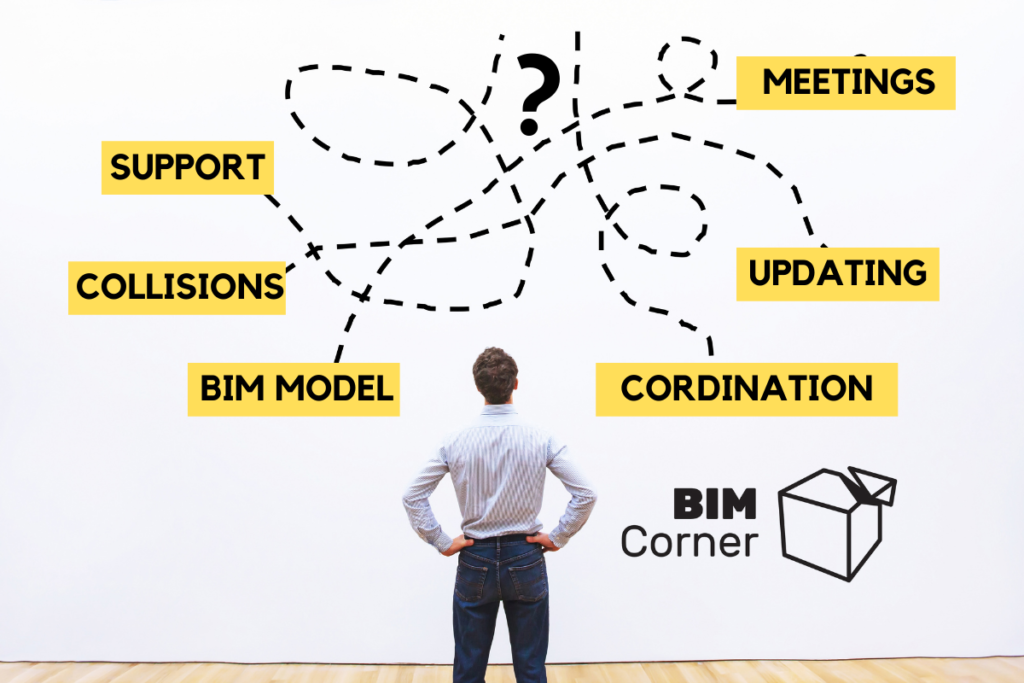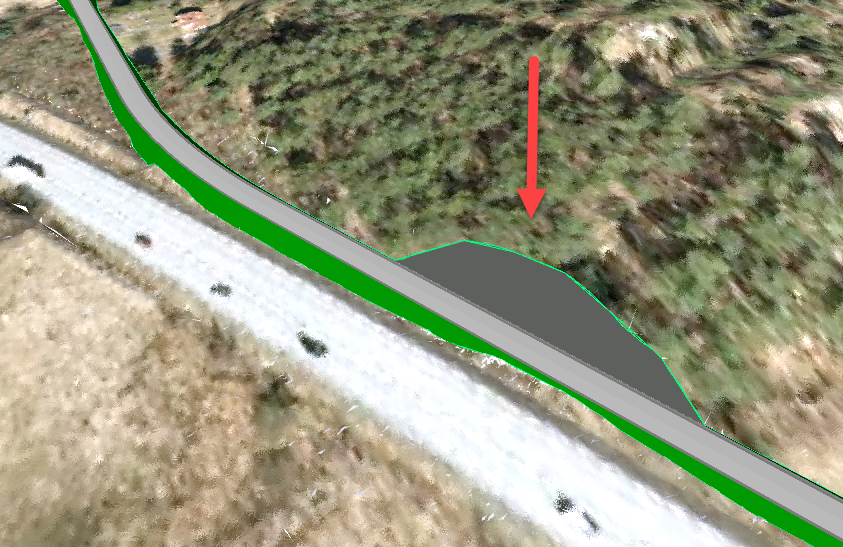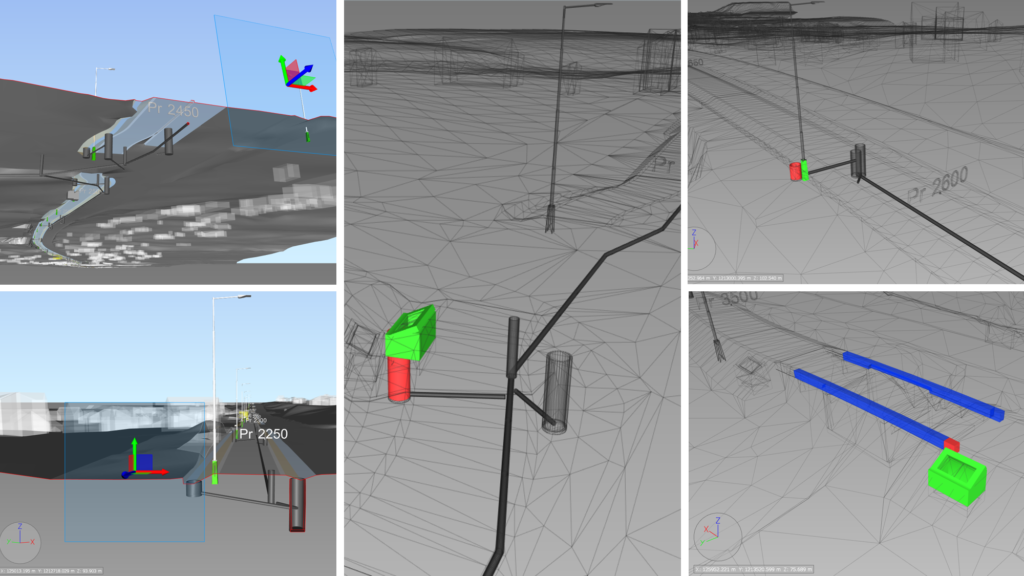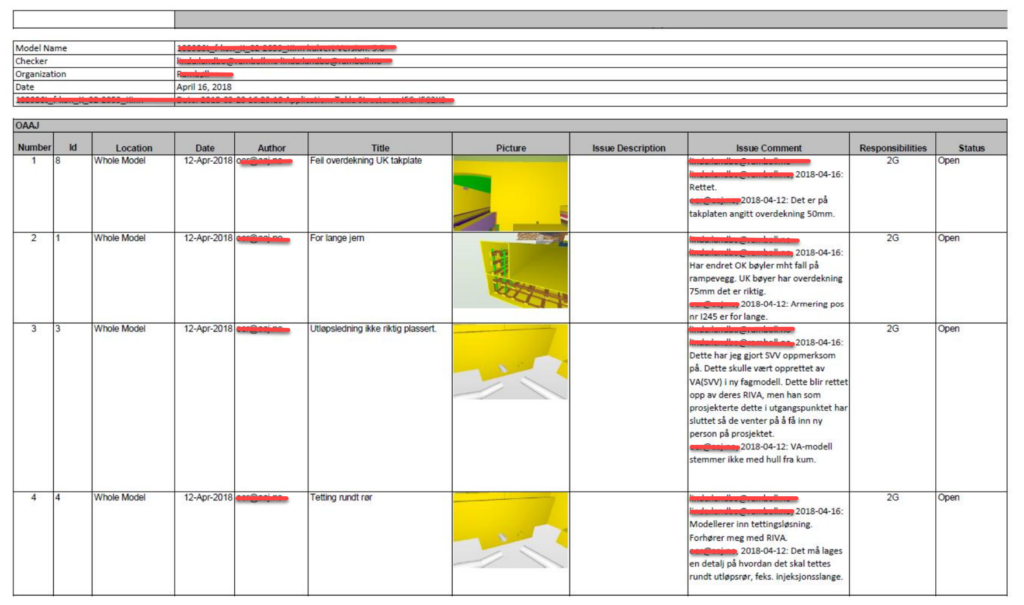You probably know from the first part of the article (http://bimcorner.com/13-tasks-before-creating-bep/) that the BIM project can be divided into three main phases. Project initiation phase, execution phase and project closure phase. The tasks of the BIM Coordinator are different at each stage. When analyzing the first phase of the project, one can get the impression that it is the most important one. Establishing the right strategy, creating a BEP, or setting up a collaborative environment put your project team on the right track. However, the BIM Coordinator’s tasks in the later phases are also important. Appropriate management of the BIM project directly influences the final quality of documentation. Therefore, we will look at the tasks of the BIM Coordinator in the project execution phase phase.
Technical support
As you could read elsewhere on this blog, BIM Coordinator, apart from coordination software, usually also has favorite authoring software. This was also the case for me. A design program that I know well is Trimble Novapoint.
Due to the fact that in Norway the road, rail and sewage domains use this solution, I have been asked many times by my colleagues for help in handling it. The difficulty of the problem depended on the advancement of the user. Often the questions were repeated.
As I found out later, the best way to answer was to create a video explaining the selected issue. So, while I was talking on the video conferencing app (MS Teams), I was recording the screen on which I was solving the problem. Creating such a video allows more people to help at once and saves a lot of time. After recording I put the movies on our internal drive. When a similar question appeared, I sent the user to the ready solution.
Organizing regular meetings and webinars also proved to be helpful. Many problems faced by designers can be solved during an hour-long Q&A session. These types of meetings are quick and effective. Of course, it is worth collecting a list of questions in advance so that you can prepare properly.
Another issue is frequently asked questions about the structure of the project. Inaccuracies most often relate to such issues as file naming, object properties, file storage location. These questions should be answered in a well-structured BEP. However, I know from experience that designers are not eager to look at this document if they do not know what to find in it. So, once this document has been written, it is useful to present and discuss its content at the kick-off meeting. It is good for the BEP to include sample solutions and graphic examples. This makes it easier for the designer to find answers and saves the BIM Coordinator’s time.
Supplementary data
In the project initiation phase, the BIM Coordinator creates models of the existing situation based on data obtained from the investor or publicly available sources. These are often data with low accuracy, but sufficient to create the first concept that is presented to the investor.
In order to verify the scope of the project, a site visit is necessary. During on-site verification, the designer analyzes the data and orders additional measurements. Standard practice is to order additional measurements from the laser scanning (lidar) to reflect the existing situation. Such an order is also enriched with points from “poles” representing special places as the depth of the trench, the height of the foundation, etc. Of course, the larger the project, the greater the probability that the designer will not pay attention to something during the site vision, or it will turn out later that some measurement is missing. This means that the supplementary data is fed into the project long after its start.
And here comes the BIM Coordinator, whose task is to update the data in the project on an ongoing basis. Very often, this work consists in checking the quality of files, converting to the appropriate format and coordination system, updating the 3D model, saving in the appropriate location, making it available to the designer. The larger the files, the longer it takes to do this.
Updating the multidisciplinary model
The multi-discipline model, otherwise known as the central model, consists of the existing situation model and discipline models. As the project matures, the discipline models evolve. Designers are responsible for the up-to-date branch models. On the other hand, BIM Coordinator is responsible for updating the model of the existing situation and multi-discipline model.
The main assumption of the central model is to reflect the progress of design work. Depending on the ambition of the project, updating the model may take place with different frequency. On projects that I participated in, it happened that the central model was not used often. This was due to the fact that it presented an outdated situation. It was rarely updated, e.g. every two weeks. For many, working with a central model can be a new way of working. Therefore, it is crucial that it is up-to-date, then the designer will be more likely to look at it.
The process of updating the model itself differs depending on the system used. For example, a new discipline model of a road (or railroad) determines an update to the terrain model (e.g. a new road opening). In programs like Navisworks, adjusting to a new situation takes a long time. It is worth paying attention to this aspect when choosing a program for presenting multi-discipline models.
Cross-discipline coordination and clash control
Cross-discipline coordination should be based on current models at an appropriate level of maturity (eg LOD 300). It is important that designers perform an own check based on a checklist before submitting a model for cross-discipline coordination.
The BIM Coordinator’s task is to combine discipline models into one multi-discipline model, and then check the collisions between the models using appropriate tools. In infrastructure projects, industries such as overground and underground networks (gas, telecommunication, electricity), road equipment (barriers, gates, signaling), traffic signs (foundations, gauge), structures (foundations) are controlled. BIM Coordinator also has its own checklist. On its basis, he checks, among others, correctness of information assigned to the model, model naming and layer naming.
Coordination of the multidisciplinary model ends with the creation of a list of clashes and issues requiring explanation. There are many tools available for managing issues. These programs have the ability to save a view and a comment.
Coordination meeting
Each coordination meeting should be planned in advance. A well-organized coordination meeting has a clear agenda and requires the participants to be prepared.
Before the BIM coordination meeting, the Coordinator checks the model’s clash with automatic tools (look at point 4). During the BIM meeting, the BIM Coordinator presents a multi-discipline model. Together with the participants, he performs a visual analysis of the model and, if necessary, completes the list of issues to be solved. Previously detected collisions are discussed and assigned to individual decision makers.
Summary
Do not be surprised by the small number of BIM Coordinator’s tasks in the project execution phase compared to the initial phase. Each of the mentioned tasks is repeated and can take a long time. Therefore, it is important to automate your work as much as possible.
I hope that after this article you feel more confident in the world of infrastructure projects supported by BIM. At the end of the series, I will discuss the tasks that the BIM Coordinator performs in the last phase. I invite you to the next part.













